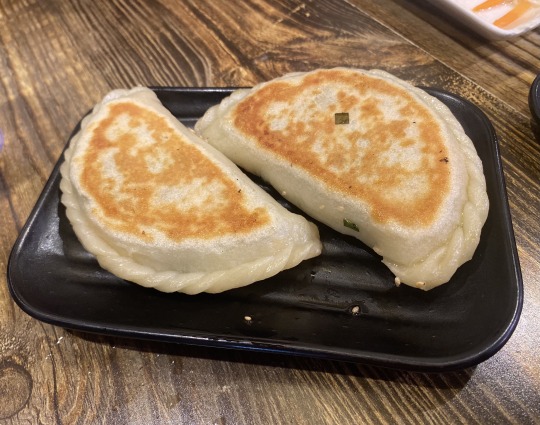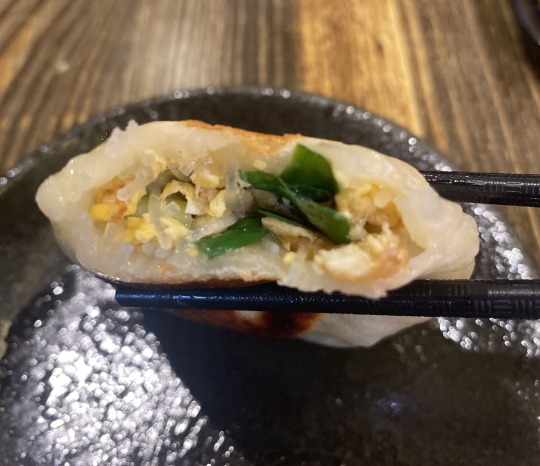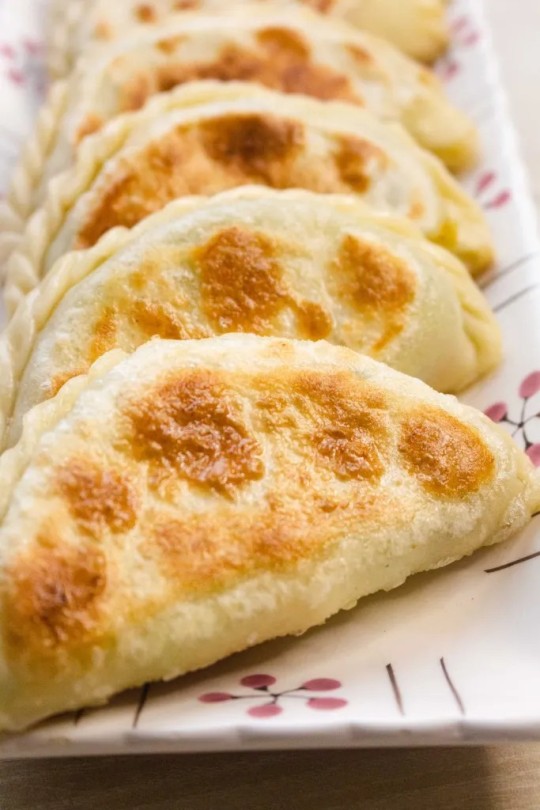#Chinese chives
Text

[ID: Rice noodles topped with yellow fried tofu and chives; piles of chili powder, peanuts, and chive stems to the side. End ID]
ผัดไทย / Phad thai (Thai noodle dish with tamarind and chives)
Phad thai, or pad thai ("Thai stir-fry") is a dish famous for its balance of sour, sweet, savory, and spicy flavors, and its combination of fried and fresh ingredients. It's commonly available in Thai restaurants in the U.S.A. and Europe—however, it's likely that restaurant versions aren't vegetarian (fish sauce!), and even likelier that they don't feature many ingredients that traditionalists consider essential to phad thai (such as garlic chives or sweetened preserved radish—or even tamarind, which they may replace with ketchup).
Despite the appeals to tradition that phad thai sometimes inspires, the dish as such is less than 100 years old. Prime Minister Plaek Phibunsongkhram popularized the stir-fry in the wake of a 1932 revolution that established a constitutional monarchy in Thailand (previously Siam); promotion of the newly created dish at home and abroad was a way to promote a new "Thai" identity, a way to use broken grains of rice to free up more of the crop for export, and a way to promote recognition of Thailand on a worldwide culinary stage. Despite the dish's patriotic function, most of the components of phad thai are not Thai in origin—stir-fried noodles, especially, had a close association with China at the time.
My version replaces fish sauce with tao jiew (Thai fermented bean paste) and dried shrimp with shiitake mushrooms, and uses a spiced batter that fries up like eggs. Tamarind, palm sugar, prik bon (Thai roasted chili flakes), and chai po wan (sweet preserved radish) produce phad thai's signature blend of tart, sweet, and umami flavors.
Recipe under the cut!
Patreon | Tip jar
Serves 2.
Ingredients:
For the sauce:
3 Tbsp (35g) Thai palm sugar (น้ำตาลปึก / nam tan puek)
2 Tbsp vegetarian fish sauce, or a mixture of Thai soy sauce and tao jiew
1/4 cup tamarind paste (made from 50g seeded tamarind pulp, or 80g with seeds)
Thai palm sugar is the evaporate of palm tree sap; it has a light caramel taste. It can be purchased in jars or bags at an Asian grocery, or substituted with light brown sugar or a mixture of white sugar and jaggery.
Seedless tamarind pulp can be purchased in vacuum-sealed blocks at an Asian grocery store—try to find some that's a product of Thailand. I have also made this dish with Indian tamarind, though it may be more sour—taste and adjust how much paste you include accordingly.
You could skip making your own tamarind paste by buying a jar of Thai "tamarind concentrate" and cooking it down. Indian tamarind concentrate may also be used, but it is much thicker and may need to be watered down.
For the stir-fry:
4oz flat rice noodles ("thin" or "medium"), soaked in room-temperature water 1 hour
1/4 cup chopped Thai shallots (or substitute Western shallots)
3 large cloves (20g) garlic, chopped
170g pressed tofu
3 Tbsp (23g) sweet preserved radish (chai po wan), minced
1 Tbsp ground dried shiitake mushroom, or 2 Tbsp diced fresh shiitake (as a substitute for dried shrimp)
Cooking oil (ideally soybean or peanut)
The rice noodles used for phad thai should be about 1/4" (1/2cm) wide, and will be labelled "thin" or "medium," depending on the brand—T&T's "thin" noodles are good, or Erawan's "medium." They may be a product of Vietnam or of Thailand; just try to find some without tapioca as an added ingredient.
Pressed tofu may be found at an Asian grocery store. It is firmer than the extra firm tofu available at most Western grocery stores. Thai pressed tofu is often yellow on the outside. If you can't locate any, use extra firm tofu and press it for at least 30 minutes.
Sweetened preserved radish adds a deeply sweet, slightly funky flavor and some texture to phad thai. Make sure that your preserved radish is the sweet kind, not the salted kind.

For the eggs
¼ cup + 2 Tbsp (60g) white rice flour
3 Tbsp (22.5g) all-purpose flour (substitute more rice flour for a gluten-free version)
1 tsp ground turmeric
About 1 ¼ cup (295mL) coconut milk (canned or boxed; the kind for cooking, not drinking)
¼ tsp kala namak (black salt), or substitute table salt
Pinch prik bon (optional)
To serve:
Prik bon
2 1/2 cups bean sprouts
3 bunches (25g) garlic chives
1 banana blossom (หัวปลี / hua plee) (optional)
1/3 cup peanuts, roasted
Additional sugar
Garlic chives, also known as Chinese chives or Chinese leeks, are wider and flatter than Western chives. They may be found at an Asian grocery; or substitute green onion.
Banana blossoms are more likely to be found canned than fresh outside of Asia. They may be omitted if you can't find any.
Instructions:
For the eggs:
1. Whisk all ingredients together in a mixing bowl. Cover and allow to rest.
For the noodles:
1. Soak rice noodles in room-temperature water for 1 hour, making sure they're completely submerged. After they've been soaked, they feel almost completely pliant. Cut the noodles in half using kitchen scissors.
For the tamarind paste:
1. Break off a chunk of about 50g seedless tamarind, or 80g seeded. Break it apart into several pieces and place it at the bottom of a bowl. Pour 2/3 cup (150mL) just-boiled water over the tamarind and allow it to soak for about 20 minutes, until it is cool enough to handle.
2. Palpate the tamarind pulp with your hands and remove hard seeds and fibres. Pulverise the pulp in a blender (or with an immersion blender) and pass it through a sieve—if you have something thicker than a fine mesh sieve, use that, as this is a thick paste. Press the paste against the sieve to get all the liquid out and leave only the tough fibers behind.
You should have about 1/4 cup (70g) of tamarind paste. If necessary, pour another few tablespoons of water over the sieve to help rinse off the fibers and get all of the paste that you can.
3. Taste your tamarind paste. If it is intensely sour, add a little water and stir.
For the sauce:
1. If not using vegetarian fish sauce, whisk 1 Tbsp tao jiew with 1 Tbsp Thai soy sauce in a small bowl. You can also substitute tao jiew with Japanese white miso paste or another fermented soybean product (such as doenjang or Chinese fermented bean paste), and Thai soy sauce with Chinese light soy sauce. Fish sauce doesn't take "like" fish, merely fermented and intensely salty, and that's the flavor we're trying to mimic here.
2. Heat a small sauce pan on medium. Add palm sugar (or whatever sugar you're using) and cooking, stirring and scraping the bottom of the pot often, until the sugar melts. Cook for another couple of minutes until the sugar browns slightly.
3. Immediately add tamarind and stir. This may cause the sugar to crystallize; just keep cooking and stirring the sauce to allow the sugar to dissolve.
4. Add fish sauce and stir. Continue cooking for another couple of minutes to heat through. Remove from heat. Taste and adjust sugar and salt.
To stir-fry:
1. Cut the tofu into pieces about 1" x 1/4" x 1/4" (2.5 x 1/2 x 1/2cm) in size.
2. Separate the stalks of the chives from the greens and set them aside for garnish. Cut the greens into 1 1/2” pieces.
3. Chop the shallots and garlic. If using fresh shiitake mushrooms, dice them, including the stems. If using dried, grind them in a mortar and pestle or using a spice mill.
4. Roast peanuts in a skillet on medium heat, stirring often, until fragrant and a shade darker.
5. Remove the tough, pink outer leaves of the fresh banana blossom until you get to the white. Cut off the stem and cut lengthwise into wedges (like an orange). Rub exposed surfaces with a lime wedge to prevent browning. If your banana blossom is canned, drain and cut into wedges.
6. Heat a large wok (or flat-bottomed pan) on medium-high. Add oil and swirl to coat the wok's surface.
If you're using extra firm (instead of pressed) tofu, fry it now to prevent it from breaking apart later. Add about 1" (2.5cm) of oil to the wok, and fry the tofu, stirring and flipping occasionally, until golden brown on all sides. Remove tofu onto a plate using a slotted spoon. Carefully remove excess oil from the wok (into a wide bowl, for example) and reserve for reuse.
7. Fry shallots, garlic, preserved radish and tofu (if you didn't fry it before), stirring often, until shallots are translucent. Add mushroom and fry another minute.
8. Add pre-fried tofu, drained noodles, and sauce to the wok. Cook, stirring often with a spatula or tossing with tongs, until the sauce has absorbed and the noodles are completely pliant and well-cooked. (If sauce absorbs before the noodles are cooked, add some water and continue to toss.)
9. Push noodles to the side. Add 'egg' batter and re-cover with the noodles. Cook for a couple minutes, until the egg had mostly solidified. Stir to break up the egg and mix it in with the noodles.
10. Remove from heat. Add half the roasted peanuts, half of the bean sprouts, and all of the greens of the chives. Cover for a minute or two to allow the greens to wilt.
11. Serve with additional peanuts, bean sprouts, banana blossom wedges, chive stems, and lime wedges on the side. Have prik bon and additional grated palm sugar at table.
127 notes
·
View notes
Text
Mum prepared her five-spice braised pork bellies for our Dinner. In the same pot are also dried shiitake mushrooms and whole garlic cloves. For the vegetable, we had the garlic chives (青龙菜) stir-fry with minced pork and chopped garlic. Took half a fishcake and some steamed white rice to go with the other dishes.

#Mum's Cooking#Home-Cooked#Dinner#Braised Pork Belly#Five-Spice#卤肉#Shiitake Mushroom#Garlic Clove#Garlic Chives#Chinese Chives#青龙菜#Stir-Fry#Minced Pork#Fishcake#White Rice#Food#Buffetlicious
32 notes
·
View notes
Text

Chinese chive flower
76 notes
·
View notes
Text
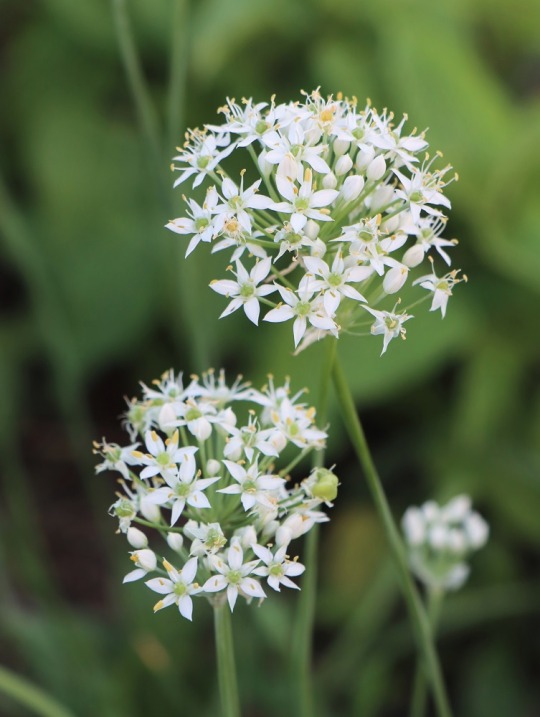
線路際に生えている野生のニラの花(9月19日)
Allium tuberosum (garlic chives, Oriental garlic, Asian chives, Chinese chives, Chinese leek)
#Allium tuberosum#flowers#kwiaty#japan#garlic chives#Oriental garlic#Asian chives#Chinese chives#Chinese leek
2 notes
·
View notes
Text

Feel Good Soup (Vegan)
#vegan#lunch#dinner#soups#chives#noodles#bok choy#mushrooms#shallots#ginger#garlic#leeks#cinnamon#Chinese 5 spice#cloves#tamari#sesame seeds#olive oil
73 notes
·
View notes
Text

Pork and Chive Dumplings (猪肉韭菜水饺)
Pork and chive dumplings are one of the most popular types of dumplings in Northern China. The filling is made with juicy pork, bursting with an intense savory flavor of garlic chive, and boiled until tender and hearty.
Recipe: https://omnivorescookbook.com/pork-and-chive-dumplings/
77 notes
·
View notes
Photo

Chinese Chives by Ernest T Scribbler https://flic.kr/p/2jwXryP
14 notes
·
View notes
Photo
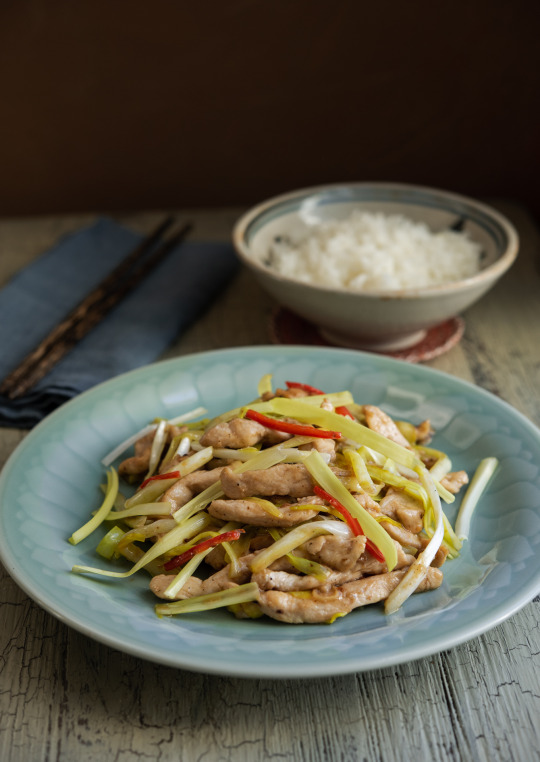
Yellow Chives Chicken Stir Fry
62 notes
·
View notes
Text
A game I've been playing in early access for the past half year, Immortal Life, came out fully wednesday, and I love it so much and think that everyone should play it. Anyways I wrote a thing
Mu Xia hummed as she carefully placed the plate of dumplings in her basket. They were a new recipe, pork and chive, and she really hoped her shijie liked them.
Carefully balancing her basket on her arm, pushing aside the kitchen curtain with the ease of long practice, she nearly dropped everything when Ji Yaohua’s voice called out, “Mu-shimei! I was just speaking to your mother about importing things for the inn. She told me to ask you about anything you needed for the kitchen.”
Basket balanced once again, Mu Xia smiled. “Oh course, Ji-shijie, thank you. It will be our usual list, but could you see if you can get more of the chives? If these turn out, I think they’ll be a hit with the customers.”
Yaohua leaned in, curious. “What are they? They smell good.”
“Pork and chive dumplings! I have some extra in the back if you want, but these are for Shijie!” In this context, there could only be one Shijie. The farmer of the Misty Valley was the reason she was even a part of Guiyun Sect after all.
Li Mengqing appeared from around the corner, summoned by the call of a new food to try. “I’ll get them! Just on the serving table?” Not waiting for an answer, she slipped into the kitchen.
“What’s the occasion?” Yaohua’s eyes narrowed slightly. “If it’s her birthday you have to tell me. She refuses to say.”
That sounded like Shijie. “No, not at all. I just haven’t seen her in a few days, so I wanted to check on her and make sure she was eating well.”
A strange look crossed Yaohua’s face. It looked pained, but also glum and mischievous for some reason. “I see. I think she’ll enjoy those a lot. Say hi for me.”
“I will!” Ji Yaohua’s strange moods wouldn’t deter Mu Xia. “See you later Ji-shijie, Li-shimei!”
After Mu Xia was gone, Mengqing came out and passed Yaohua a dumpling. “Ji-shijie. If Shijie hasn’t been seen in a few days...”
“Yes.” Yaohua took a bite of the dumpling. It was very good indeed. She’d have to research where to obtain chive seeds. The Misty Valley could support nearly any kind of plant in its soil, so it was just a matter of sourcing. And having Shijie grow them would be much cheaper in the long run than importing chives. As for Mu Xia... “She’d have to find out sometime. Besides, if it’s been a few days, Shijie could probably use the food.”
“Hm. True.” Mengqing ate another dumpling. “Hey, do you think it’s possible to make a red bean dumpling?”
She’d never had a sweet dumpling before. “I’m sure you can convince Mu-shimei to try.”
The walk to the Misty Valley was pleasant. The weather was warm, and a bit breezy. There was rain on the horizon, but it wouldn’t hit until tonight. She spoke briefly to Zhou Qian’er about the day’s catch, and to Chen Yuanzhou about fishing her up a few puffer fish for an upcoming banquet.
The Misty Valley hummed with power as it always did. She could almost see the crops growing as they absorbed the spiritual energy, cycling it and sending it back into the earth, stronger. That was one of the things that had surprised her, after she’d started cultivating. Mu Xia had been to the Misty Valley before, usually on her way to the Sunset Forest to pick scarlet sage, but never before had she been able to see the energy she had always felt in the place. It had always felt alive to her, vibrant in ways that she hadn’t been able to comprehend. It was no wonder that Shijie was so strong, if this was where she lived, worked, cultivated.
Speaking of. “Shijie? Are you here?” She checked both fields, poked her head into the Blessed Land, knocked on the door of the freshly renovated house. But she was nowhere to be seen.
Then, suddenly, a flash of light. The same as the others when they teleported somewhere else. Mu Xia couldn’t wait to learn that technique. “Shijie, you’re home! I brought- ” She stopped short.
It... was Shijie. She could tell. But the usual flowing robes and perfectly styled hair were in horrible disarray, and covered in... substances. Mud was the least egregious of the substances, but Mu Xia could also see some sort of green-grey plant sap that smelled horrible, more green goop, and blood (?!) in various shades and consistencies. “Shijie?!”
Instead of asking for help or something, Shijie wobbled and mumbled, “whatimezit?”
“I...” Mu Xia checked the position of the sun. “Almost dusk.”
“Mmm,” Shijie nodded. “Worms.”
And she teetered off, in the direction of her silkworm hut. Mu Xia followed helplessly. As Shijie pulled a large bundle of mulberry leaves from her storage ring, Mu Xia asked, “Shijie, are you alright?”
Shijie nodded again. “Jss tired. Still got,” she paused, trying to visibly count up her remaining tasks.
That wouldn’t do at all! “No, you’ve got nothing to do until you’re cleaned up and rested!” Mu Xia spread the rest of the leaves over the worms, grabbing Shijie’s arm and pulling her towards the house.
Shijie pulled away before they could enter, detouring to the waterfall. To Mu Xia’s shock, she stood under it for a few minutes, allowing the water to wash away the substances. Then she stripped her clothes off, replacing them with a clean, dry set from her ring, while Mu Xia went “Eep!” and turned around.
Finally, Shijie sat down at her table, Mu Xia across from her. The waterfall had woken her up enough to speak in full sentences, so when Mu Xia set down the basket and opened the lid, her eyes lit up and she said, “Dumplings! Thank you Mu-shimei, I was starting to get hungry.”
“Aren’t you capable of inedia?” It wasn’t healthy, to survive on inedia for too long, but at the very least it prevented the feeling of hunger. Shijie didn't usually rely on it, but it was useful when she went to the secret realms and didn't want to fill up her storage rings with food.
Shijie made a noise of affirmation and swallowed her dumpling. “Yeah, but not for more than a few days. Maybe once I hit Core, but not yet.”
Mu Xia subtly pushed the plate closer. “What were you doing anyways?”
“I needed more golden disks. I used them all up learning spells, which means I don’t have enough for research and development, or to upgrade my axe.” Shijie ate another dumpling. Jin Li crept off of his nest and sniffed at one, then wrinkled his nose. “If I can do that, I can get past those ironwood tree roots that are blocking the path to the eastern forest, see if I can find out what’s in there. Maybe there’s a great treasure that we can use to rebuild the sect.” She looked critically at the half of a dumpling she was holding. “Do you think I can get seeds for chives? I’d like some more aromatics to work with, and these are good. Do you have the recipe?”
Mu Xia nodded. “I finished developing it today. If you liked them, I was going to introduce them to the inn menu.” Shijie had very good taste. If she liked something, odds were it would do well with many customers.
“The usual arrangement then.” Ingredients, to repay the time Mu Xia spent developing her recipe, and to thank her for her generosity. “Assuming I can get chive seeds in.”
“If you can, I’ll see about getting more recipes with them in.” Mu Xia fidgeted with her sleeve. “Shijie, is that. Is that how you usually look when you leave town for a few days?”
Shijie huffed, offended. “I wasn’t gone for a few days, I have to be back every day to feed the worms. They’re very important Mu-shimei.”
“Of course,” she said, conciliatory. “But why didn’t I see you yesterday then?”
A long moment of silence. Shijie was more awake, but still not to her usual calibre, it seemed, as it was taking her a minute to think that through. “Oh, I guess I did feed them at 3 in the morning yesterday. And the day before. And then it was straight back to the desert.”
“Shijie! How long has it been since you slept?” Another long pause, that Mu Xia didn’t let her finish. “Go to bed! Right now!”
“But I have to sweep the forest for flowers, and then I have to schedule some classes for tomorrow, and I need more krill so I have to fish some of those up tonight, and having more pearl dust is always useful and -”
“Go to bed!”
It took another few minutes of corralling her, but eventually Shijie was laying in her bed, Jin Li curled smugly on her chest, preventing her form moving. In just a few seconds, she was asleep.
Mu Xia breathed a sigh of relief. Then she got out her paper crane talisman. Shijie did so much for them. They could do a few things for her, at least for tonight.
#immortal Life#Mu Xia#Ji Yaohua#Li Mengqing#Did I intend the entire cast to be the girls? No#that's just kinda how it worked out when I was planning this out while walking six blocks in ten minutes to get to my next class#Based on various Elder Farmer discussions we've had on the discord#where Elder Farmer emerges from the mines after a week with a heart rending cry of 'MY WORMS!!!!'#or Elder Farmer mediates an argument between townspeople (because Elder Farmer is an Elder now and supposedly has the authority to do that)#and instead of offering advice just puts the two arguers to work on the potatoes#Elder Farmer is a Mess#is how most of us play I think#Terrible sleep schedule because there's no enforced bed time#staying in the realms for days on end#only emerging to Feed the Worms and harvest crops I guess#Chives sadly aren't available in game. Neither western chives nor Chinese chives (which these are supposed to be)#I guess green onions are but also. Not the same#there's also no garlic which I Suffer about daily#anyways play Immortal Life#it's a really cute farming game about rebuilding a cultivation sect after FIRE RAINS DOWN FROM THE SKY and destroys it#and there's an overarching plot of trying to find out why the fire rained down from the sky and destroyed the sect#and all the characters are so well written and unique and they all have strengths and flaws and they're so good and I love them all#Mu Xia got the spotlight here but I may do things with the others later#uh in case it wasn't clear don't be like Elder Farmer. Eat well. Sleep well. Don't forget to feed your worms.#Loxie's fics
2 notes
·
View notes
Text
Chow Mein z kurczakiem


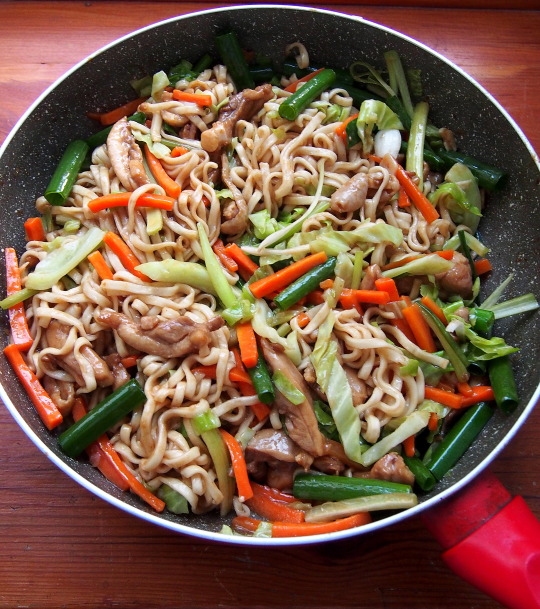
Jedno z popularniejszych i prostszych dań kuchni chińskiej. Jego podstawą jest makaron jajeczny z mąki pszennej (chow mein to również nazwa samego makaronu) z dodatkiem krojonych w słupki warzyw, czasem mięsa, tofu, ryb oraz owoców morza (głównie krewetek). Potrawę smaży się w woku, dosmakowując jasnym i ciemnym sosem sojowym, sosem ostrygowym i cukrem.
Nazwa Chow Mein wywodzi się od mandaryńskiego słowa chǎomiàn i taishańskiego chāu-mèing, co tłumaczy się jako smażony makaron.
Danie rozpowszechniło się w Stanach Zjednoczonych, Kanadzie i Wielkiej Brytanii w połowie ubiegłego wieku dzięki migrantom z Państwa Środka. Później powędrowało w inne części świata, jest np. bardzo rozpoznawalne w Indiach i Nepalu.
W związku z długotrwałą obecnością poza krajem swego pochodzenia, uległo rozmaitym przeróbkom. Trudno znaleźć jeden przepis na smażony makaron. Jako dodatki spotkać można m.in. kapustę, marchew, seler naciowy, szczypior, cebulę, kiełki fasoli mung, a także kurczaka, wieprzowinę i owoce morza. W USA preferuje się wołowinę w miejsce kurczaka. Bywa tam czasem podawany w bułce (swoją drogą czego oni tam nie serwują w bułce?). Na terenie Indii makaron łączy się z serem paneer lub jajecznicą.
W Chinach także nie ma jednego właściwego przepisu na Chow Mein. Smażony makaron podawany jest z rozmaitymi składnikami. Oprócz tych wymienionych powyżej, w przepisach chińskojęzycznych napotkałam m.in. jaja, czosnek, por, bok choy, paprykę, grzyby shiitake, małże, pomidor, a nawet parówki. Oczywiście nie wszystko na raz, zwykle trzy do czterech dodatków.
Niektóre Chow Meiny mają intensywny kolor, inne są blade. Wszystko zależy od ilości dodanych sosów: sojowego i ostrygowego. Jedne są soczyste, inne suche, co z kolei łączy się z metodą przygotowania makaronu, o czym za chwilę.
Również sam makaron - główny bohater tej potrawy - bywa różny: cieńszy lub grubszy, okrągły, kwadratowy lub prostokątny w przekroju. Wszystko zależy od regionu, a także pożądanego efektu. Zazwyczaj jednak jest cienki i stanowi 60-80% całości dania. Jeśli nie udało się Wam dostać makaronu chow mein, możecie wykorzystać spaghetti no 3-5, albo nasz makaron jajeczny, nitki. Trochę rozminiecie się ze sztuką, ale grzechu ciężkiego nie będzie.
Ciekawostką może okazać się sposób obrabiania klusek w woku. Podstawowe techniki są dwie. Ta, którą zazwyczaj stosujemy, czyli namoczenie w gorącej wodzie lub ugotowanie ich, wypłukanie w czystej, odsączenie i połączenie z warzywami oraz sosem ustępuje innej, polegającej na obsmażeniu ze wszystkich stron ugotowanego, opłukanego i osuszonego wcześniej makaronu, zanim połączy się go z resztą składników. Zabieg ten przypomina smażenie makaronu ryżowego, a jego celem jest uzyskanie chrupkości i wydobycie z niego dodatkowych walorów smakowych i zapachowych. Efektem tego zabiegu jest też częściowe wchłanianie sosu przez makaron, przez co gdzieniegdzie jest miękki, a w innych miejscach chrupiący. W wielu chińskich restauracjach makaron smażony jest w głębokim tłuszczu, ale w domach stosuje się tą praktykę znacznie rzadziej. Spójrzcie, jak robi to właściciel kanału YT, Singsing Kitchen (13'22'' - 15'07''):
youtube
Moja wersja jest tą prostszą. Nie obsmażałam makaronu, tylko wypłukałam i wrzuciłam na patelnię (nawet po wok nie chciało mi się wdrapywać na szafkę pod sufitem), ale obiecuję sobie, że i taki kiedyś zrobię.
Składniki:
ok. 200 g makaronu chow mein
3-4 podudzia kurczaka bez kości
1/2 łyżeczki białego pieprzu
nieduży kawałek kapusty
1/2 marchwi
1/2 cebuli
2-3 gałązki szczypioru
olej z orzechów arachidowych
Sos do Chow Mein
2 łyżki sosu ostrygowego
2 łyżki jasnego sosu sojowego
2 łyżki ciemnego sosu sojowego
łyżeczka oleju sezamowego
płaska łyżka cukru
płaska łyżka skrobi ziemniaczanej
biały pieprz do smaku
Wykonanie:
Makaron ugotować i wypłukać zgodnie z informacją na etykiecie. Odcedzić na sicie i tam zostawić.
W małej miseczce wymieszać wszystkie składniki na sos.
Kurczaka razem ze skórą pokroić w paski o szerokości palca i dokładnie wymieszać z dwiema łyżkami przygotowanego sosu, a następnie obsypać i obtoczyć w łyżce mąki ziemniaczanej. Zamarynować przez 7-10 minut.
W tym czasie opłukać warzywa, obrać marchew i cebulę. Marchew pokroić w słupki, cebulę w piórka, szczypior na 4-cm kawałki, kapustę w podobnej długości paski.
Dobrze rozgrzać wok lub dużą patelnię. Wlać chlust oleju arachidowego, rozprowadzić po całej powierzchni naczynia i poczekać aż prawie zacznie dymić. Wrzucić kawałki kurczaka i obsmażyć ze wszystkich stron, nie przesuszając. Przełożyć na talerz.
Na patelnię wsypać marchew, cebulę i kapustę. Ponownie szybko obsmażyć, podrzucając energicznie kilkakrotnie, podlać kilkoma łyżkami wody lub bulionu, przykryć pokrywką i pozwolić, aby warzywa podusiły się 3-4 minuty.
Po tym czasie dodać makaron i - podrzucając parokrotnie - połączyć składniki. Smażyć kilka minut, dorzucić mięso, sos, szczypior i ponownie - kilkakrotnie podrzucając zawartość patelni - całość wymieszać.
Wykładać na talerze i podawać.
#chow mein#chow mein z kurczakiem#chicken chow mein#chow mein noodles#kuchnia chińska#chinese cuisine#kurczak#chicken#marchew#carrot#kapusta#cabbage#szczypior#chives#dania mięsne#meat meals#meat dishes
2 notes
·
View notes
Text
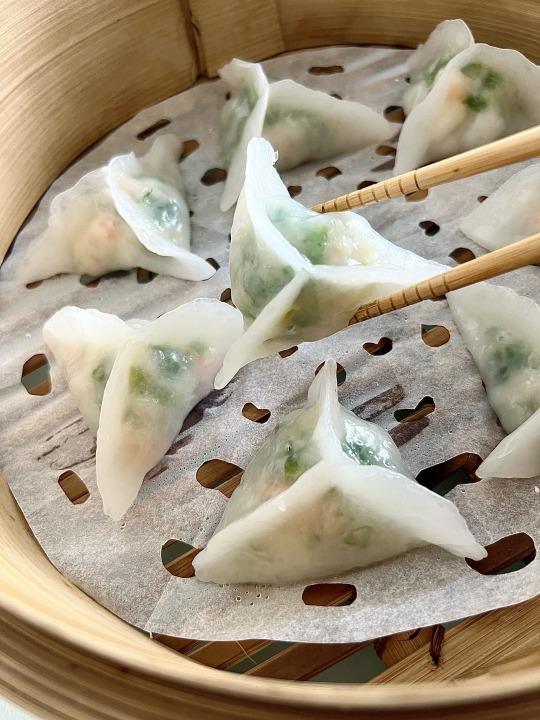
Chinese Shrimp & Chives Crystal Dumplings 🥟
#shrimp & chive dumplings#shrimp dumplings#crystal dumplings#cantonese food#dim sum#dumplings#chinese cuisine#cantonese cuisine#food#foodies#food pic#asian food#chinese cooking#cooking
6 notes
·
View notes
Note
🌺 to Artair for Reverb, Caesar, and Steph, please!
Flower for your Muse
"I tried not to go too crazy." Artair rubs at his neck, before he offers each one:
Reverb
It's a mostly green and white bouquet, with a splash of orange and yellow near the center. The outer edges are dappled with strawberry blossoms, twined around long stalks headed by white and yellow blooms of chinese chives. At the center is an orange crown of flowers that hang from the bottom of the stem with a frond of wild green to top plant; they were a few crown imperials, bundled together, almost as wild as his hair when disguised as a human.
Ceasar
Ceasar's is more colorful, an array of cool and warm purples. The largest flowers, Roses of Althea, come in both pale, cool purples almost lilac in shade, and warmer ones that are almost pink, with red near the base of the petals. It is a type of hibiscus, and that is evident by the base where a small pistil grows. To contrast against the pastel brightness, there are also flowers so purple and dark they almost appear black. The edges of the dark geraniums are more saturated, rimming them like neon in a brighter, more intense purple. And throughout the bouquet are white basalm flowers in small white clusters with petals that almost look like ruffled fabric.
Steph
The bouquet is an array of long stalks of wild arum, in all manner of saturated, bright colors, mostly yellows, reds, pinks and whites. They are surrounded by a collection of small wild daisies, white with bright yellow eyes that help the arum pop brightly. the whole of them are tied together with akoko, the leaves a sage green, but dotted with strange looking blooms with small appendages surrounding what looks like the bud, almost giving it a strange, alien appearance.
#ic artair#answering things#ask meme answers#flower meme#reverb#Crown Imperial means power and pride and also arrogance#chinese chives for courage and strength#strawberry means perfection#caesar#rose of althea is persistent love with protective properties#dark geraniums are melancholy and gentility#white basalm is longevity and healing as well as never ceasing remembrances#steph#wile arum symbolizes zeal ardor and manifests happiness#wild daisy is cheer innocence and playfulness#akoko is persistence and has protective properties#long post#ryouscared#:D i tried my best lol#thankfully artair has some stuff to help him say what he wants to
1 note
·
View note
Text

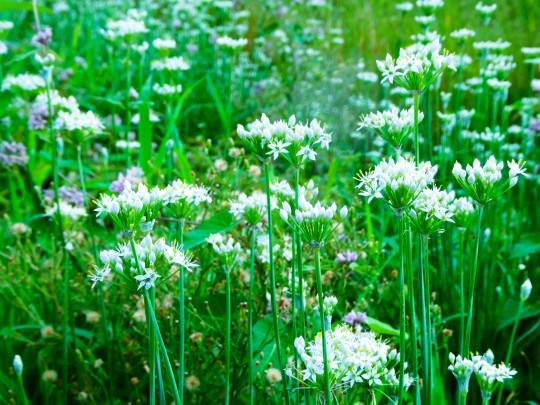
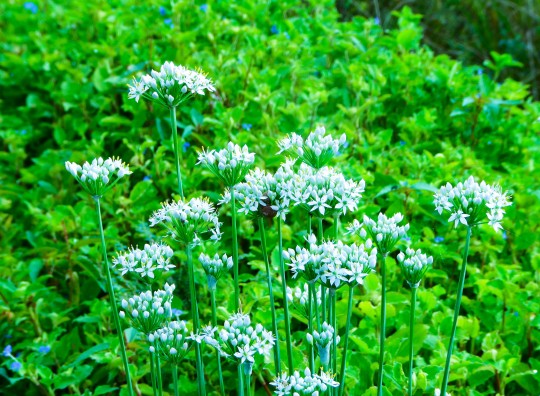

Chinese chive flowers in the field
68 notes
·
View notes
Photo
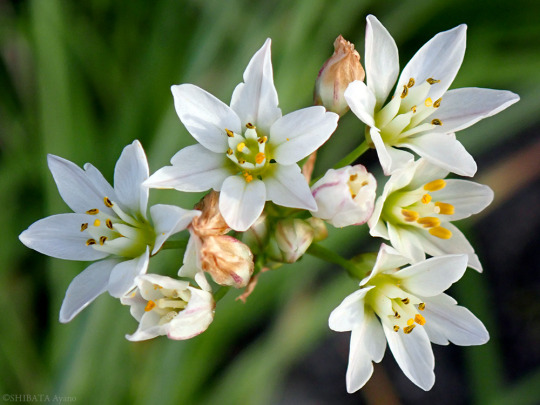
ニラの花
#ニラ#花#flowers#kwiaty#路傍の植物園#Allium tuberosum#oriental garlic#Chinese chives#韭菜#garlic chives#asian chives#chinese leek#japan
23 notes
·
View notes
